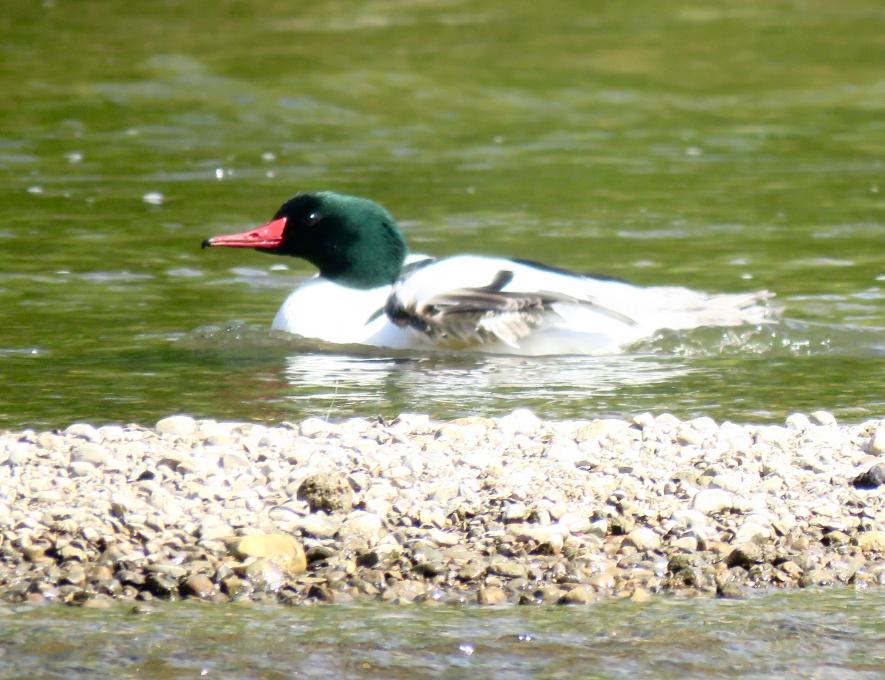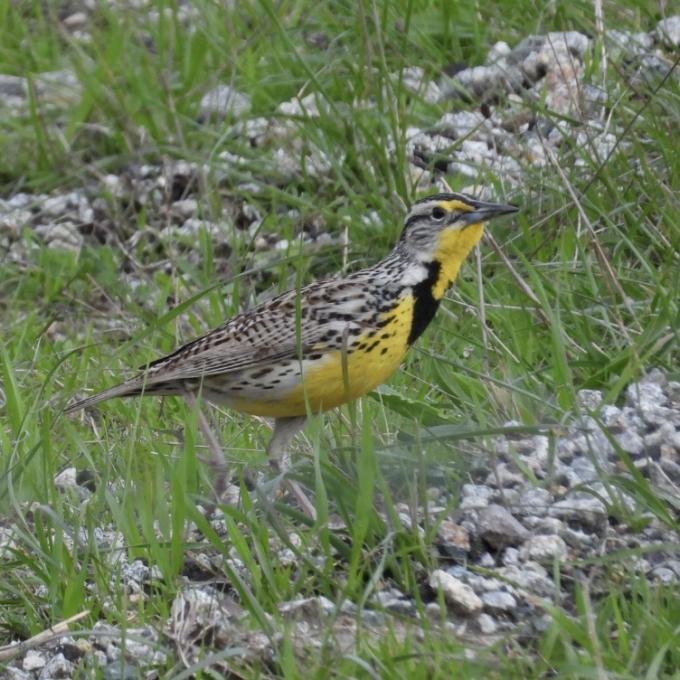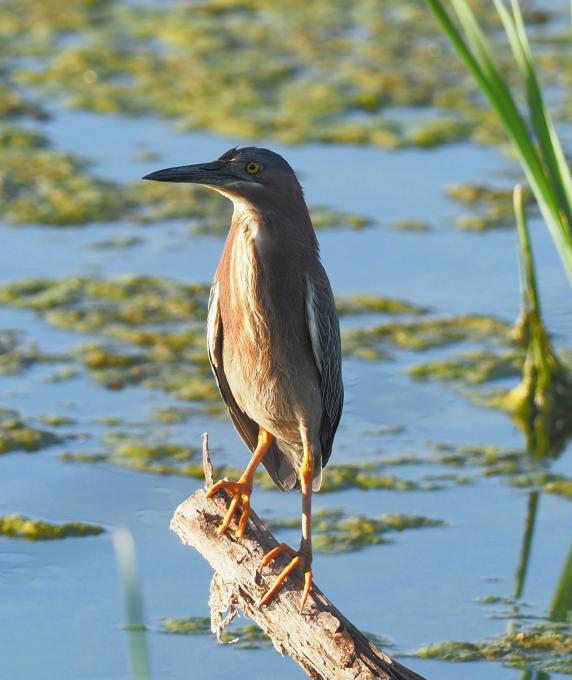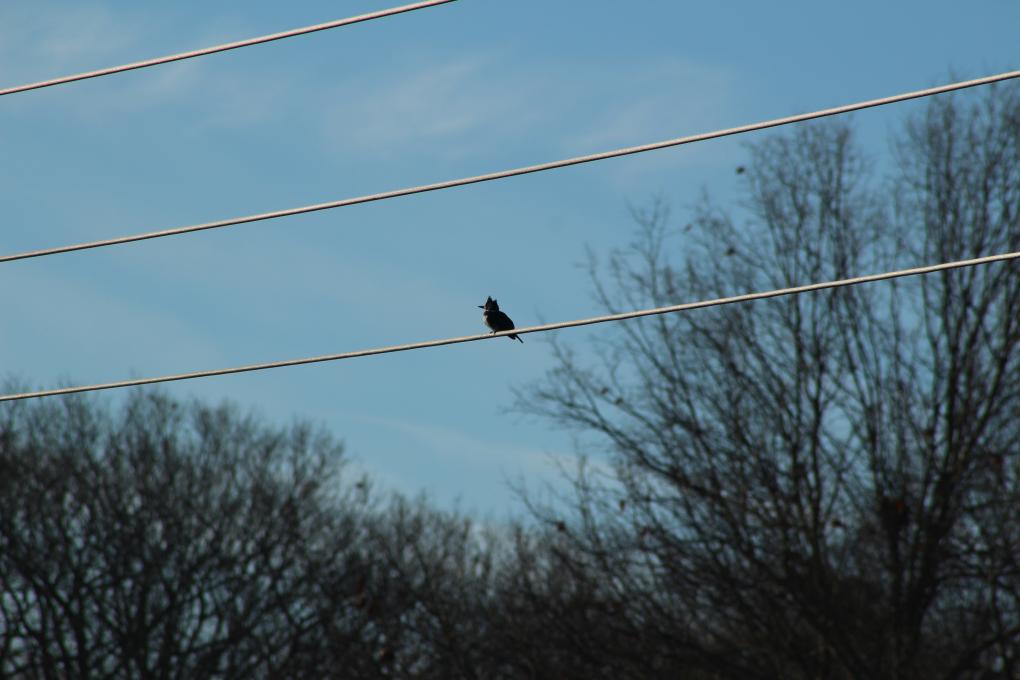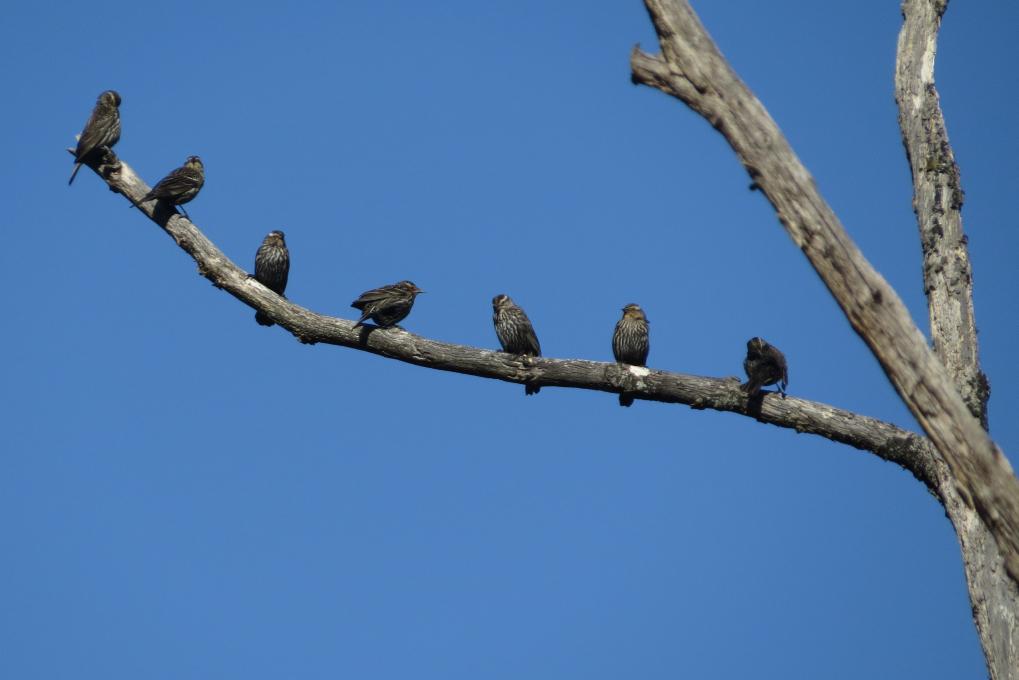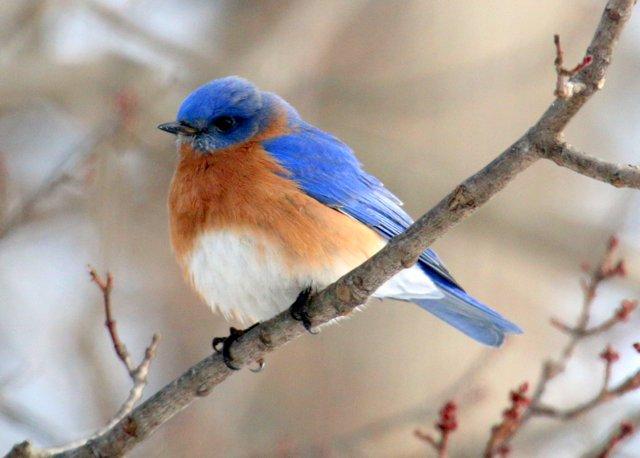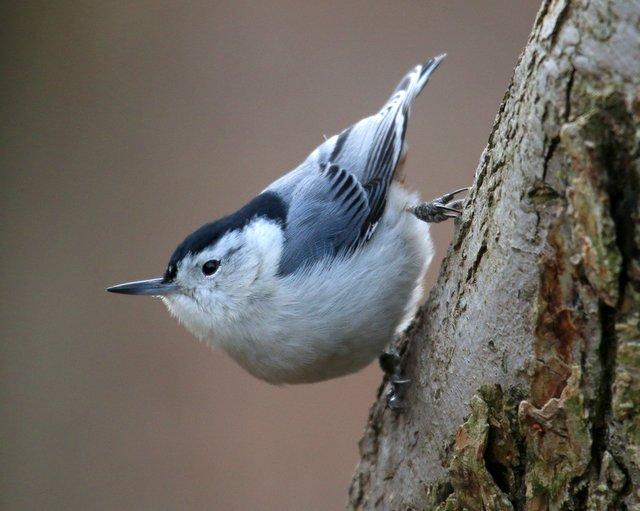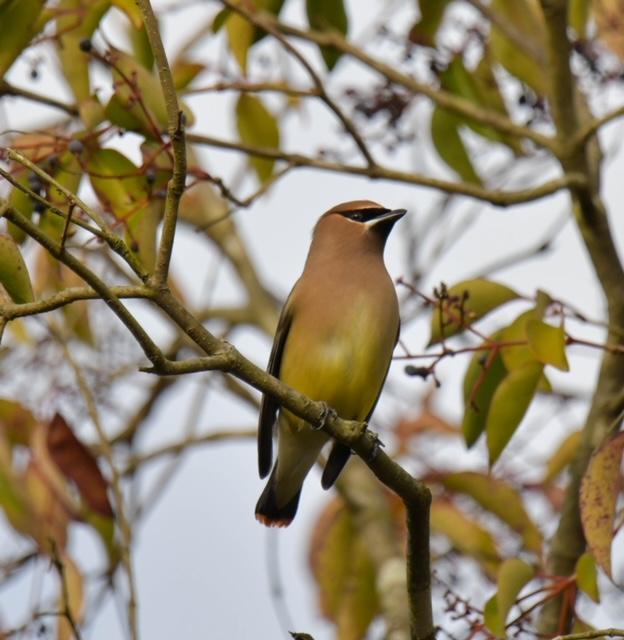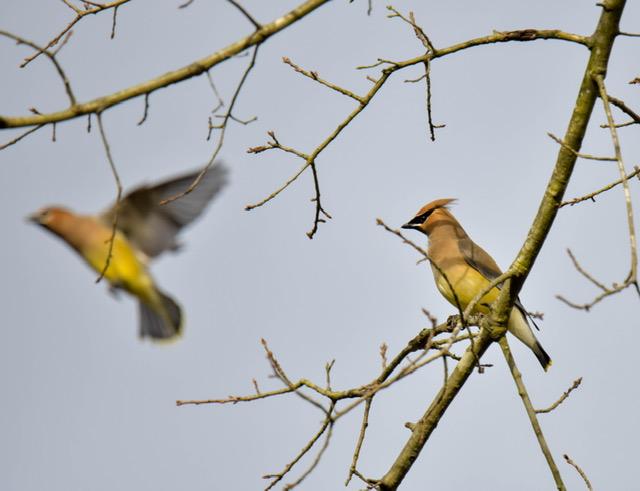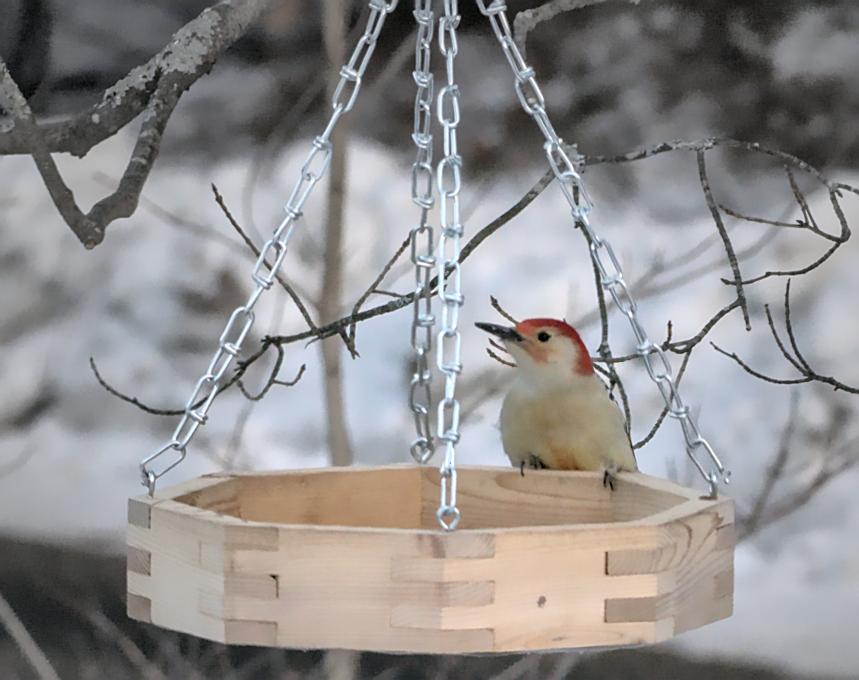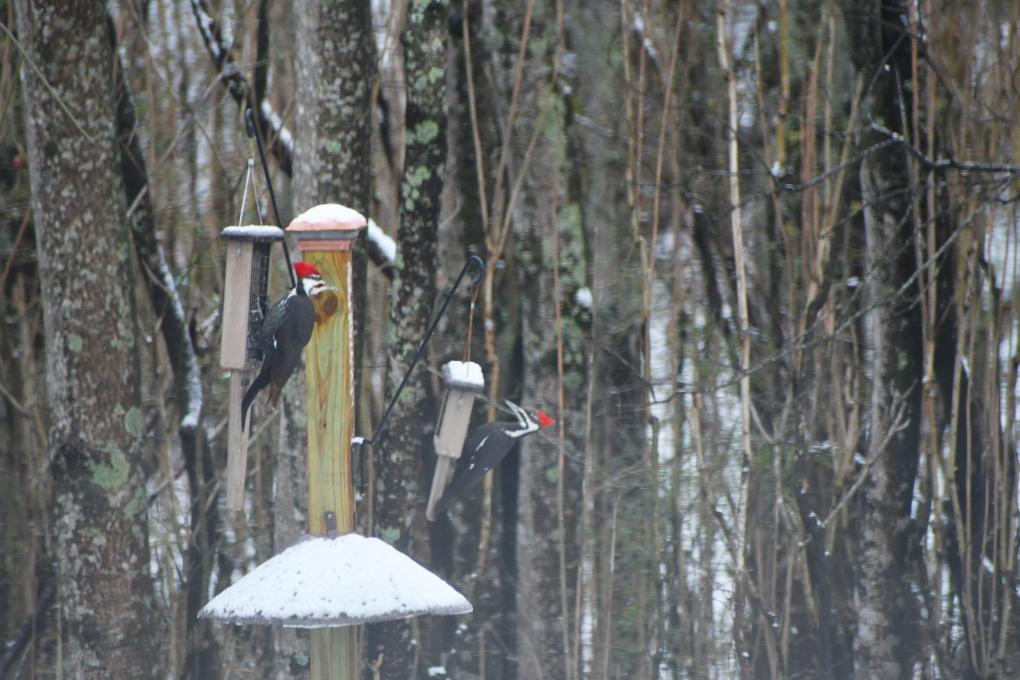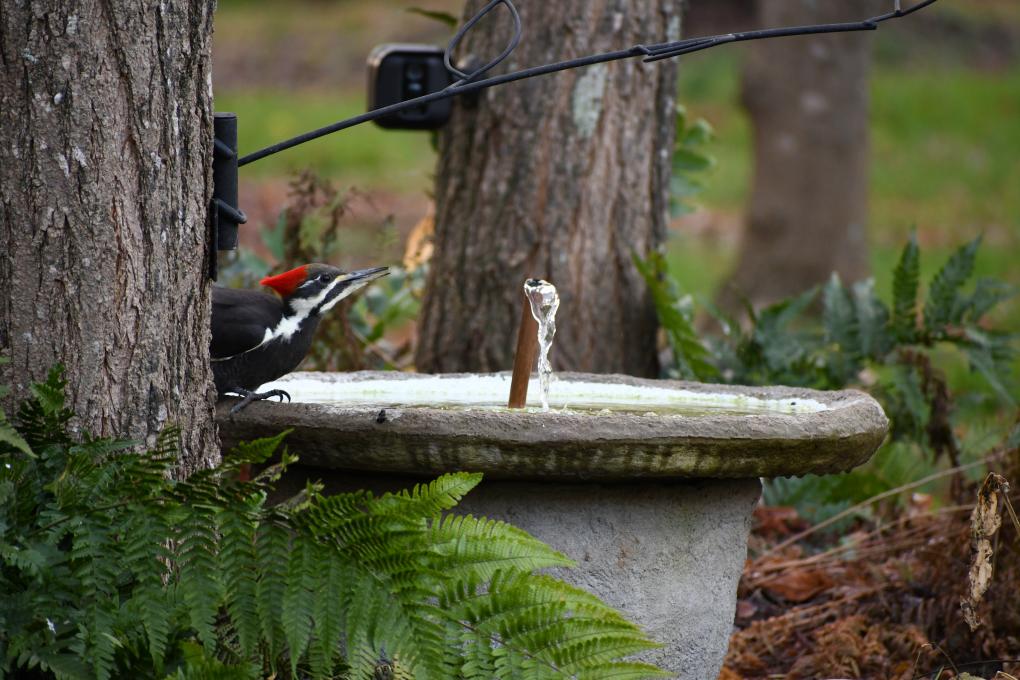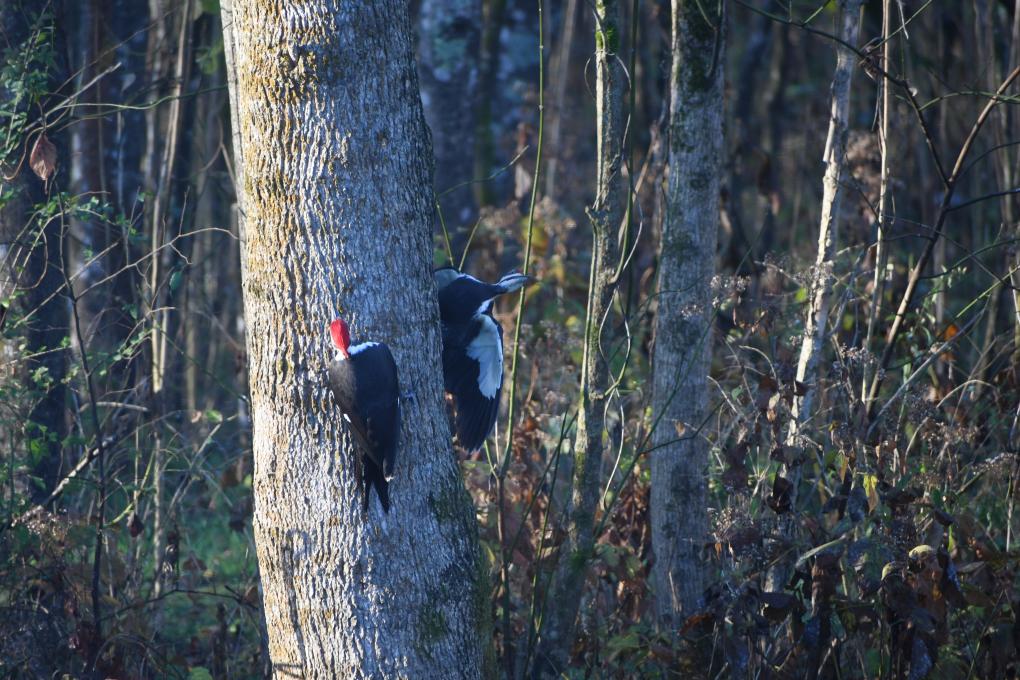The Cornell Lab Bird Academy › Discussion Groups › Bird Photography with Melissa Groo › Practice Understanding Birds for Better Photos
-
I frequently walk in an area with lots of oak and mixed oak/fir habitat, so I chose Acorn Woodpeckers as my study species. Learning about their communal groups and the storing of acorns in granary trees, I listened for the sounds of tapping, located a granary tree and settled in to observe. Several woodpeckers were actively collecting and storing acorns. They were initially alarmed when they noticed me, signaling others to my presence. I maintained adequate distance and they gradually returned to their work of storing acorns and I was able to get some nice photos with my NikonP1000.



-
Such a beautiful bird! I really like the photo with the blue sky and and green leaves. The colors seem to frame the bird nicely. I have seen several woodpeckers in my area but I have never seen an Acorn Woodpecker. I really like their red, bushy top.
-
-
After completing this lesson, I took the challenge and left my backyard birding to venture into a nearby park. I used Ebird and discovered the Belted KingFisher. It looks like a beautiful bird and there have been many recent sightings at my nearby park. I set off this sunny afternoon after several days of rainy weather. I was super excited for my adventure and really hoping to see the Belted Kingfisher. Well, after 2 hours of waiting and watching and wandering, I did not find him. However, 5 minutes into my journey at the park, I looked up into the trees and directly overhead was a BEAUTIFUL Red Shouldered Hawk just sitting and observing the happenings of the trail. I was so excited to see this magnificent creature that I have only seen 3 times in the past decade in my backyard. I am so happy to have completed lesson 1 with the knowledge and confidence to explore outside of my backyard. I can't wait for future lessons and future bird sightings. I am looking forward to learning how to use my camera to it's full ability. I recently purchased a Nikon D 780. I used my 200-500 mm f/5.6 for this shot. And I will , one day, see the Belted
KingFisher. And I can't wait!!!

-
I've had a small grey bird I've not recognised before in my garden. I was alerted to its presence by its call, a high pitched cheep, cheep cheep. I did my research and after a further couple of very brief sightings I've identified it as a grey fantail. I'm in Melbourne, SE Australia. I've learnt that they're returning now in the southern spring. The next challenge is to get a respectable photograph. Its a small bird that flits in and out of the bushes. It wont keep still! Hopefully I'll be back with an image.
-
Labor Day weekend, two days after I finished lesson 1 I am on my way out to the patio to put the grill away and l can hear a bird making a very loud distress or alarm call. Once outside I realize it is in the Arborvitaes and I think to myself, "I will never find it", but I did! I couldn't identify the bird because of low light and the height but remembered my camera was just inside the back door. Again, I thought, " It will be gone by the time I get back to this spot", but what the heck, the grill can wait. As I came back no more bird calls but I see something white up there and get off a few shots. I looked down to check out the photos, look up and the bird is gone! This is my bird! I'm doing everything backwards. I download the photo on my computer and did the Merlin ID off the screen. Seeing the result my reaction is, "This does not seem right". The next day I spent researching House and Carolina Wrens and even checked out Winter, Sedge and Marsh Wrens, the ones I can see in Ohio. I knew more about the House Wren, they nested in a bird house hanging from our pergola. While Wrens have many similarities there are differences and I see a Carolina Wren in these photos. I don't know what happened to my paragraphs, not enough space?


-
I chose the Great Blue Heron to research and photograph. Great Blue Herons are fairly common around the canals and ponds here so I set out to some ponds near my house to photograph them. I did find it interesting that on this particular day all my heron sightings were by the canals leading to the ponds and not the actual ponds themselves. Other than that my sightings did not surprise me, and my research was spot on with what I would find.

-
During the late summer of 2019, I purchased a hummingbird feeder and filled it as the directions indicated. I was able to observe the little avians for several weeks before it became evident that they had stopped coming to the feeder.
In the year 2020, I saw no hummingbirds and I was ready to abandon even trying to attract them in 2021. However, an acquaintance who was a more experienced birder told me to hang the feeder in early June and just wait.
Whlie I was waiting, I did some research and learned the migration cycle for the hummingbirds. My research helped me have more patience and I was rewarded with several visitors to the feeder. In fact, they seem to have taken a liking to my backyard and have become regulars. The activity captured here appears to be a female stretching her wings during a preening session after feeding.

The photo shared here was taken using this very amatuer set-up. And you can read more about it here:
https://www.kenlon.com/ed/wp/?p=1957
-
Read about Crested Serpent eagle, their nesting sites. Feeding habits. Trying to learn more about them.
-
I took this photo a few days ago of a wood duck preening her little ones. She was so sweet with them, and they were also preening each other too, learning from her I guess. They seem to do really well in the large park near me (over 500 acres)- Prospect Park in Brooklyn, New York. I often see them on the smaller pools that have protected, wooded vegetation alongside as well as nest boxes which I don't know if they use- I've heard from other birders that they don't but they do like the area where they are placed and sometimes I see them in that general area. I used my Canon Powershot so the quality isn't very good, but I love the convenience of having it in my pocket. I'm trying to decide if I want to upgrade. I know my photos would improve, but I'm not sure I want to carry a large camera around with me. I'm also a little afraid of the learning curve. I'm an avid birder and use my sightings and photos to inspire my art: hand colored block prints usually featuring birds.

-
 I thought I would start with Red-Winged Blackbirds. As a beginner, it was nice to photograph a bird that isn't shy, and displays impressively in the spring when establishing or on territory. The males arrive first, and stake out their spots. This particular habitat, in the Minnesota River Valley National Wildlife Refuge, hosts dozens of nesting pairs, and is less than a mile from the Mall of America!
I thought I would start with Red-Winged Blackbirds. As a beginner, it was nice to photograph a bird that isn't shy, and displays impressively in the spring when establishing or on territory. The males arrive first, and stake out their spots. This particular habitat, in the Minnesota River Valley National Wildlife Refuge, hosts dozens of nesting pairs, and is less than a mile from the Mall of America! -

Browsing through my Birds of Seattle book, I decided to go with the Pileated Woodpecker, as my experience with it really matched our lesson. I was walking through the woods at Golden Gardens park and noticed a downed tree that had been practically hollowed out with oval holes. I wondered what had done the digging. I wondered about beavers. In reading up on this large woodpecker, I learned that such holes are the often the only evidence of the bird in the area.
A while later, I heard a distinctive tap-tap-tap of a woodpecker pecking away. But I couldn't see it from where I was. Fortunately, I was able to circle around the small pond I was standing by and from the opposite side was able to see and photograph this amazing bird. If you'd like to hear and see it in action, you can watch this short video that I captured here.-
What a great video you got! This is one of my favorite birds. I first saw one 30 years ago and saw very few ever again, until recently. They seem to be more common in my area now and I have even seen one in my own yard! I'd really like to get some good pictures of one someday.
-
-

 I went to a local park along the Bow River in Calgary hoping to observe and watch some of the birds local to the area at this time of year. I did not expect to see these two American White Pelicans so that was an unexpected surprise. They both stood on this rocky outcrop for some time before one ventured out into the water.
I went to a local park along the Bow River in Calgary hoping to observe and watch some of the birds local to the area at this time of year. I did not expect to see these two American White Pelicans so that was an unexpected surprise. They both stood on this rocky outcrop for some time before one ventured out into the water. -

-
I chose the wood duck as it had been reported at Irvine Regional Park (CA) where I planned to bird today (May 14). Here's what I found out about wood ducks from Allaboutbirds.org and the CA Nature Mapping Program: Males are iridescent chestnut and green, with ornate patterns on nearly every feather; females have a distinctive profile and delicate white pattern around the eye. Wood Ducks have a unique shape among ducks—a boxy, crested head, a thin neck, and a long, broad tail. In flight, they hold their head up high, sometimes bobbing it.
Habitat? These birds live in wooded swamps, where they nest in holes in trees or in nest boxes put up around lake margins. They are one of the few duck species equipped with strong claws that can grip bark and perch on branches. They are considered a "dabbling" duck species as they do not "dive" for food.
Food sources? Wood Ducks eat seeds, fruits, insects and other arthropods. When aquatic foods are unavailable they may take to dry land to eat acorns and other nuts from forests and grain from fields.
Breeding/nesting seasons? Wood Ducks pair up in January, and most birds arriving at the breeding grounds in the spring are already paired. The Wood Duck is the only North American duck that regularly produces two broods in one year. The female lays a clutch up to 15 cream colored eggs (normal 6-10). The hen incubates the eggs for 25 to 37 days. The young can fly at about 8 to 10 weeks. The Wood Duck breeds from British Columbia south to California, and from Montana east to Nova Scotia and south to Texas and Florida. Winters near Pacific Coast north to Washington, and to New Jersey in East, rarely farther north. All ducks live near water. The wood duck, as its name implies, requires wooded cover for nesting. In California, breeding season begins in April.
What distinctive behaviors can I expect to see? They hang around the peripheries of water bodies in groups of 20 or fewer birds. Favored habitat: wooded swamps, marshes, streams, beaver ponds, and small lakes. They stick to wet areas with trees or extensive cattails.
Is the bird migratory or does it stick around all year? In my area (southern CA), there are both year-round and migratory wood ducks.
On my birding trip, I saw three male birds, all on a small man made lake bank. -
Research helps me because i will know the perfect time to take a picture but yet at the same time be able to understand what enviroments i can find birds and also when birds will be in my area by what migration habits they have. Understanding those things are important to understand birds and photograph them.
 .
. -

I read about e-Bird sightings of the Common Merganser in a river at a large park in Ann Arbor (Southeastern Michigan). I had never seen one, but thought the male was stunning - with its large red beak, dark irridescent head & neck, black and white body and orange feet. So, I decided to research it and set out, hoping to find it. I have a beautiful new bird book, "Birds of North America", by the National Audubon Society. It has the unusual addition of conservation notes about every bird, which is important to me. I was interested that the Common Merganser is at the top of the aquatic food chain, meaning that its populations predict the health of their local habitat. Ann Arbor is known for its environmentalism, so the presence of mergansers is not surprising. I also read that Common Mergansers prefer wooded rivers, such as the one I hoped to find them in, and are often seen in flocks of 10-20. I read that they swim upstream and dive often for fish. So, I set off in search of Common Mergansers at the location they had been seen. As soon as I arrived at the river bank, I saw a beautiful male Common Merganser swimming and diving often. I'm sharing my favorite photo with you, which shows his colors the best. He also seemed to be playing at times - just splashing a lot - and even went skidding through the water at top speed! -
My first Western Meadowlark showing its bold black "V" on its yellow breast in the grassy fields was near Boulder, Colorado. This one is from Turri Road in Los Osos, California in the rolling pastures where Black Angus cattle roam. I did read that it may flock with other blackbirds. Some of those seen were feeding near the feet of the cattle on the other side of the road.
During the spring mornings the lovely melodious songs are frequent. On an overcast windy late afternoon it was fairly quiet. I read that it feeds mainly on insects and caterpillars, with seeds and berries later on in the season. It hides a well constructed nest in a depression possibly a hoof print which can be deepened a bit with its bill and covered with grasses that make a waterproof roof. Often other grasses overhang the nest for camouflage.

-
I am hoping to photograph sandhill cranes as they come in to land. Sandhill cranes migrate through my area in large numbers and can be found reliably at Roswell Marsh Wildlife Management Area near the Idaho/Oregon border and at the Malheur Wildlife Refuge in Oregon. Because of COVID I can’t get to Malheur right now. So I’m hoping to catch them at Roswell Marsh. Access is limited but there are a couple of spots close enough to allow for decent photography. Unfortunately, their comings and going’s are somewhat irregular as they fly out to feed in the nearby agricultural fields and then come back to the Marsh to rest and spend the night. Late afternoon or early evening may be the best time to catch them coming in to land in the Marsh.
-
I saw a Great Horned Owl female nesting. I expected her to be low in the nest since it was snowing. There was an owl upright blocking the entire hole. On closer observation, I decided it was the male because I could see the tufts of a second owl in the tree hole cavity that looked to be lower as if sitting on the nest. I knew from the research to listen. It was the second time back that I saw the tree with the owls in it.
-

-
I chose the belted kingfisher. There is one along the brook near our backyard. I first encountered it during the spring shut down 2020. I even observed one kingfisher chase another one. I've learned that that is a courtship behavior. I learned that they need clear water to find prey. I knew they perch on overhangs. There are power lines that run across the brook and that is one of its favorite perches. I learned that they nest in exposed vertical banks along water and roots of upturned trees (there are plenty of them around here.) They are one and done with nests. There aren't many tall banks along my brook and the ones we do have are close to trails. I have consistently seen or heard a male kingfisher year around. Now that breeding season is upon us I will keep an eye out to see if I spot two of them

-
I often bird in a local City Park, which contains a wetlands and quiet wooded trails, and which is in walking distance from my home. Over the past 6 years, I've observed approx. 110 species of birds, including migrants which show up for a few days in Spring or Fall, then move on, and birds which nest here.
For the assignment suggestion, I chose the Red-winged Blackbird. Typically they show up here in March, although I've already seen them (Feb. 26) at another location about 15 miles from here. They're pretty much gone by August, and then I see some in October, which I believe are birds that have nested north of here, and are on their way south as part of the Fall migration. In past years, I've seen males in early March, then it seems like the females show up a week or two later. However when I saw the ones (25 or so) on Feb. 26, there were males and females together. When the ice clears from the wetlands in the above referenced Park, I'll be watching for the return of the Red-winged Blackbirds, and looking to see if the females show up right away, or later.
-
I chose the Eastern Bluebird to research, and my husband chose the White-breasted Nuthatch, which is becoming his favorite bird at our feeders. We only get the bluebirds at our feeders in Ohio when there's snow on the ground every year. I learned that they like mealworms. Perhaps they have trouble finding food when there's so much snow, and that's why they are coming to our feeders now. The snow is melting now, but my husband was ready with his camera when we learned that we would be getting a big snowfall, and sure enough a family of them showed up. The nuthatch is a frequent visiter. One tip to getting him is to know that he will be facing down the tree, will fly in quickly for a seed or peanut, and then be off to the tree to eat it. Here are our best photos from the last two weeks of each bird.


-
Late in the afternoon, on February 21, a flock of cedar waxwings visited our neighbor's arrowwood viburnum bushes and made short work of their bountiful harvest of berries. From our kitchen window, I was able to take a few photos as the waxwings were cooperative (somewhat still and came close) and seemed practically drunk with the bounty of berries. They all started out in a large nearby bare oak tree and in small groups swooped in for a fruit course before heading back and swapping places with their compadres. At first the closest individuals were wary but after I'd sat still watching for a few minutes, they rapidly returned to their feast. In spite of their numbers, they seemed relatively quiet. The entire feeding episode took about 30-45 minutes and although they didn't quite strip the branches bare of the berries, they certainly depleted most of them. Once they'd all finished eating, they returned group by group to the oak tree, seemed to digest for a few minutes and flew away in one group as the sun set. However, they came back in smaller numbers over the next two or three days to take care of any remaining tidbits. I see how cedar waxwings are very effective disperser of the seeds of fruiting plants.


-
Hi! My bird is the Red-Bellied Woodpecker. I've only seen them here in NH since 2015. They've been gradually extending their range northward. Literature says they will eat from seed feeders and suet feeders in winter, and indeed the male and female I see do just that. This week (Feb 19) they have just started singing their quavery spring song. Glad they think it's spring, but it's snowing!

-
I chose Pileated Woodpeckers for this lesson. We have a pair living in a small wooded area on our property and they come each morning to feed on suet then often come to the birdbath. They also are large enough that the slower movements and size are easier to capture, especially through a window. It was surprising to learn from Bird's of the World and Sibley's Guide to Bird Life and Behavior that not much research has been done on the displays of these magnificent birds. The Peterson Sound Guide helped discern the keek, whinny, and drum. Two were observed going through some sort of ritual dipping and spreading and my research indicated this was possibly pair bonding. I did observe that while they were participating in this behavior with each other they were less concerned with me. They traveled both on the ground and in the trees repeating the behavior. Their caution was readily visible going up and down tree and I learned to recognize and predict their next move or position to prepare to photograph. Additionally, I was able to view photos made prior to beginning this course to re-evaluate how I might have handled the behaviors differently in the photos.



Read More:
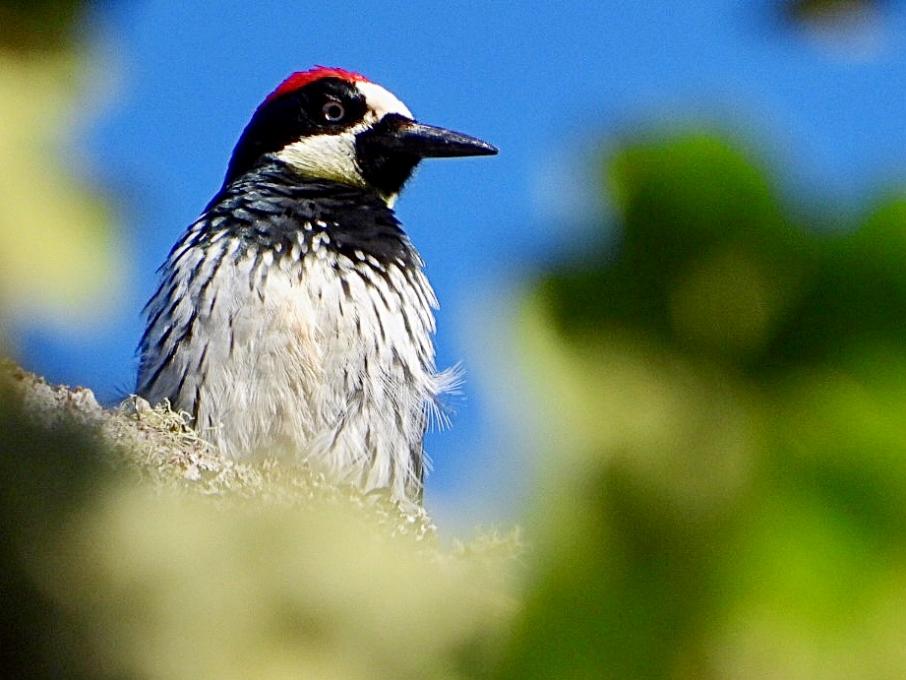
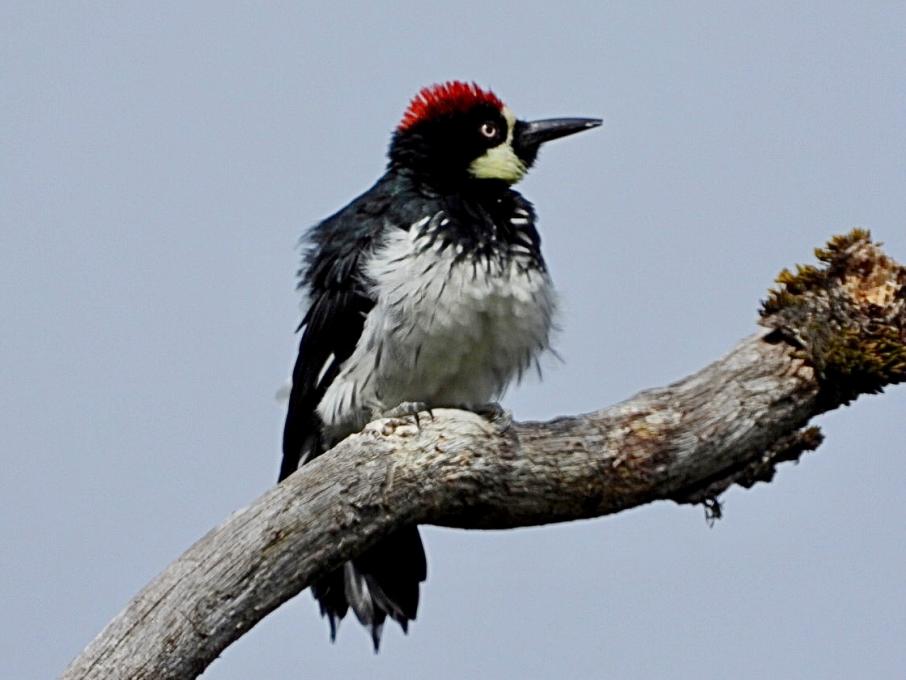
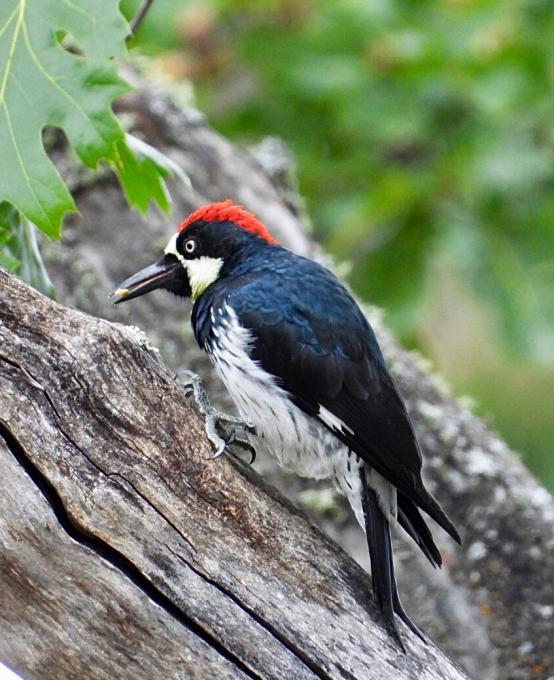
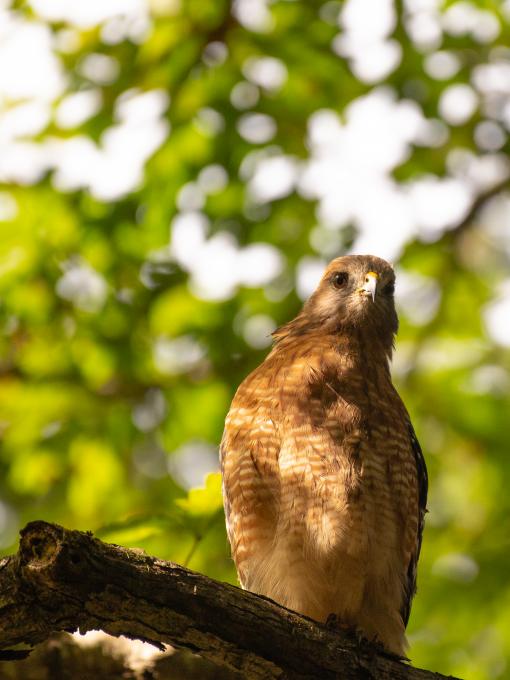
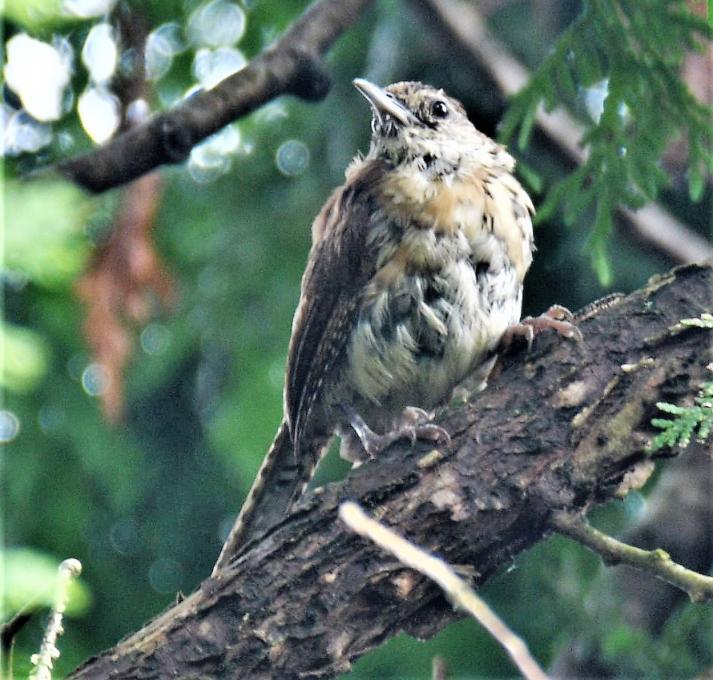
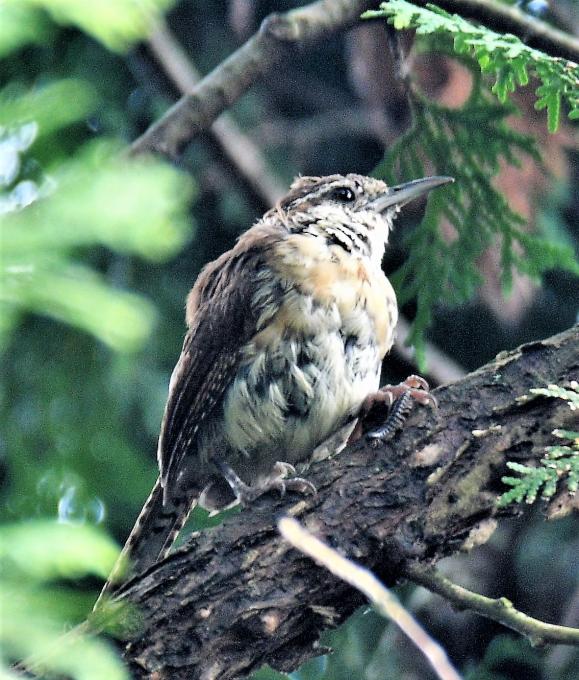
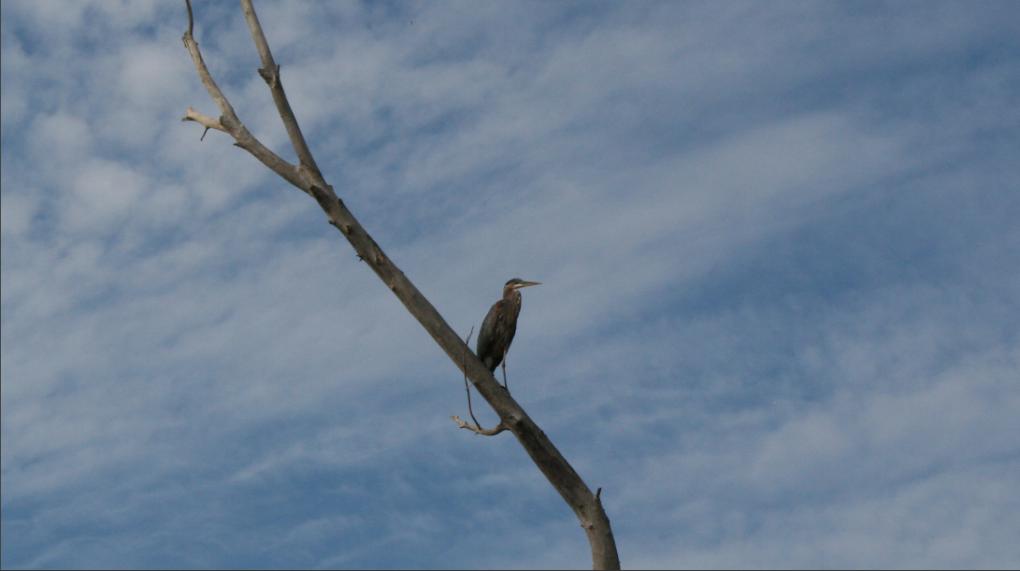
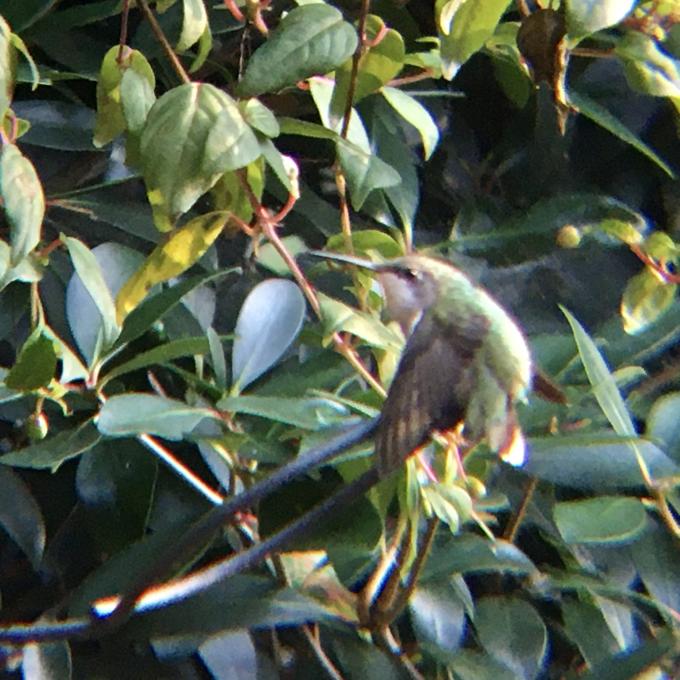
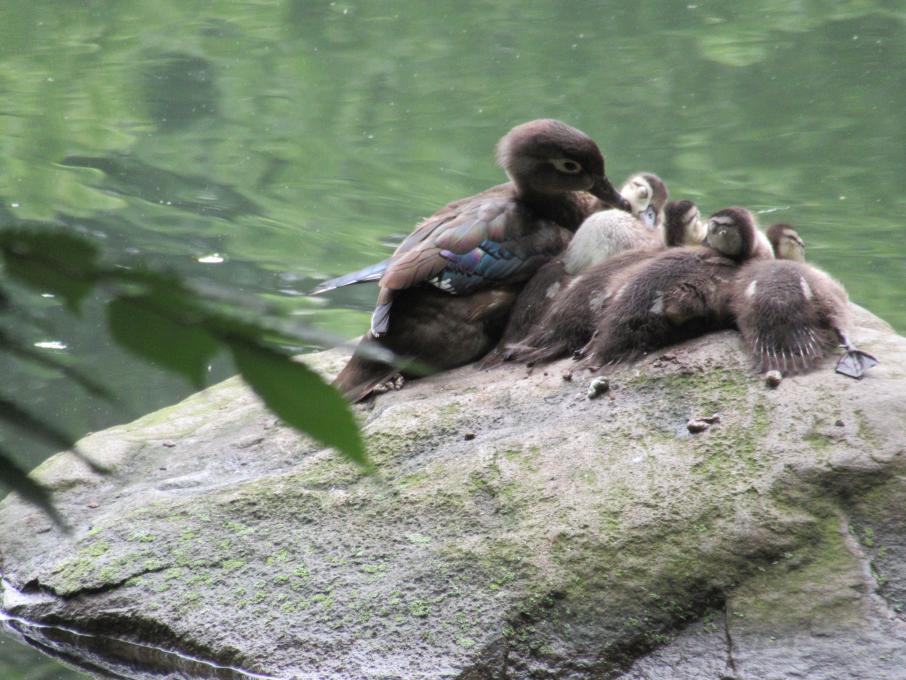
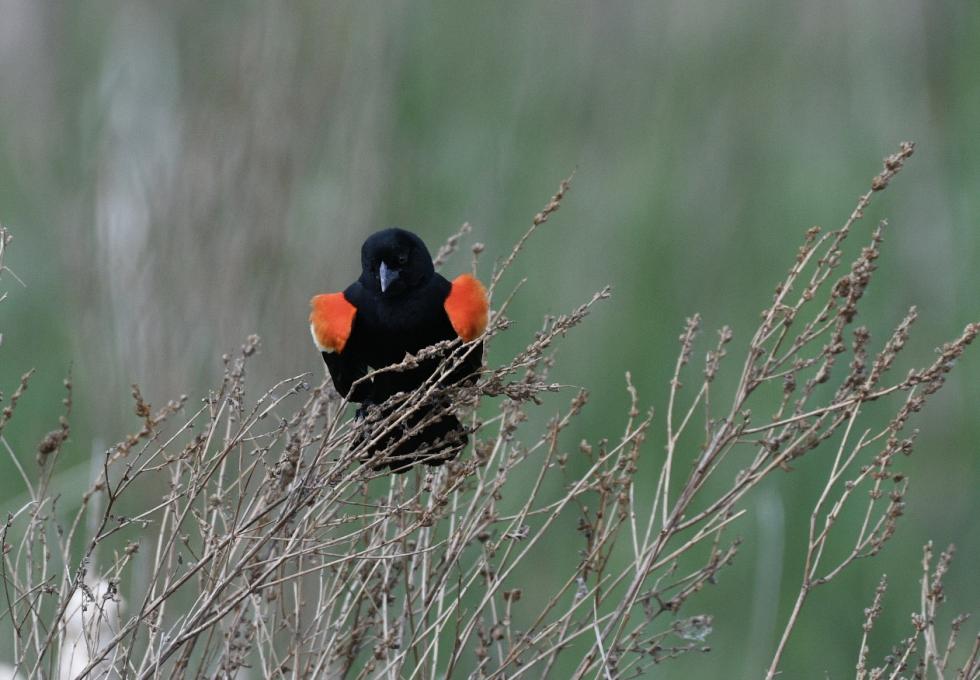 I thought I would start with Red-Winged Blackbirds. As a beginner, it was nice to photograph a bird that isn't shy, and displays impressively in the spring when establishing or on territory. The males arrive first, and stake out their spots. This particular habitat, in the Minnesota River Valley National Wildlife Refuge, hosts dozens of nesting pairs, and is less than a mile from the Mall of America!
I thought I would start with Red-Winged Blackbirds. As a beginner, it was nice to photograph a bird that isn't shy, and displays impressively in the spring when establishing or on territory. The males arrive first, and stake out their spots. This particular habitat, in the Minnesota River Valley National Wildlife Refuge, hosts dozens of nesting pairs, and is less than a mile from the Mall of America! 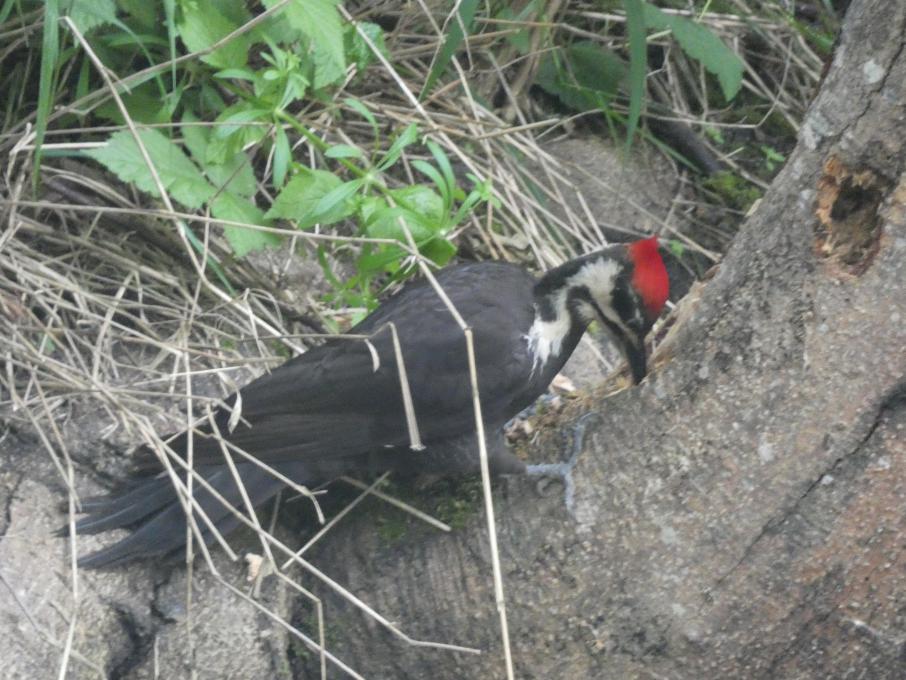
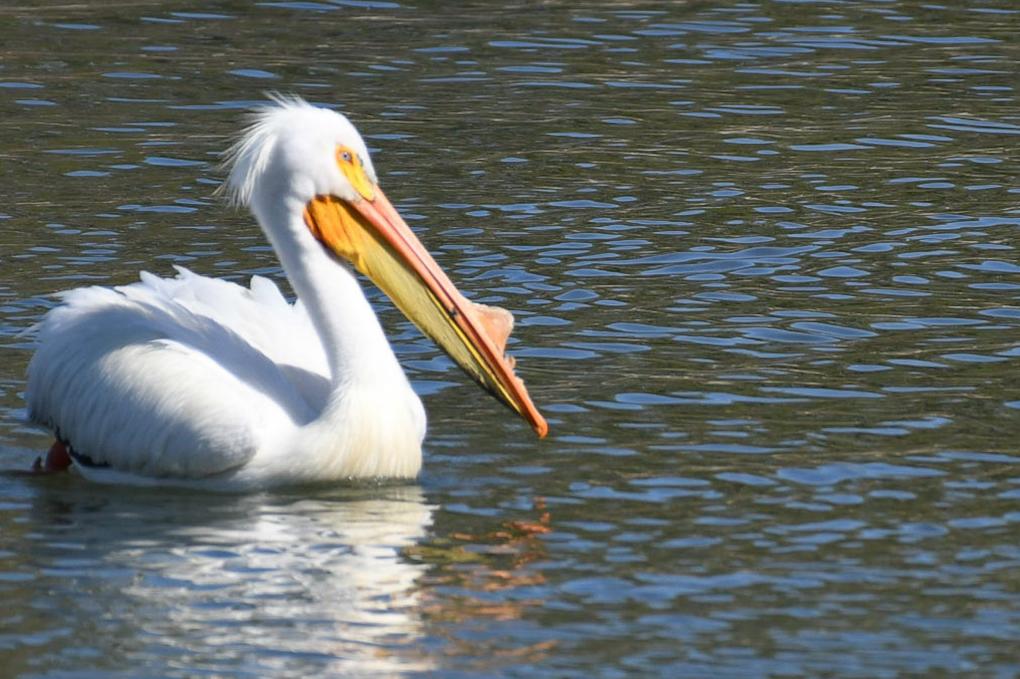
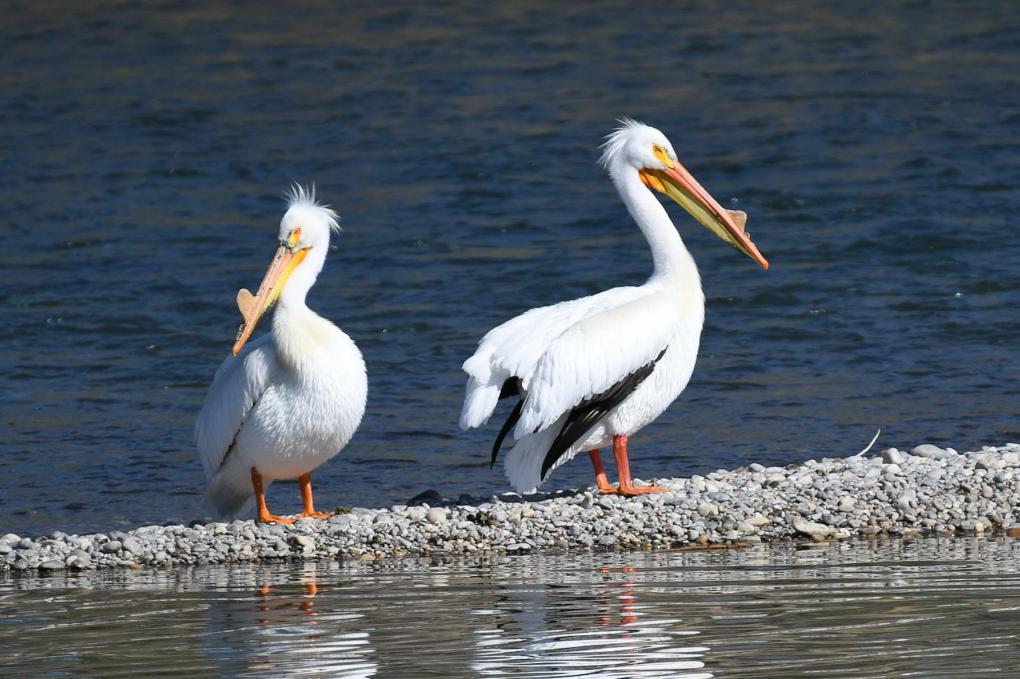 I went to a local park along the Bow River in Calgary hoping to observe and watch some of the birds local to the area at this time of year. I did not expect to see these two American White Pelicans so that was an unexpected surprise. They both stood on this rocky outcrop for some time before one ventured out into the water.
I went to a local park along the Bow River in Calgary hoping to observe and watch some of the birds local to the area at this time of year. I did not expect to see these two American White Pelicans so that was an unexpected surprise. They both stood on this rocky outcrop for some time before one ventured out into the water. 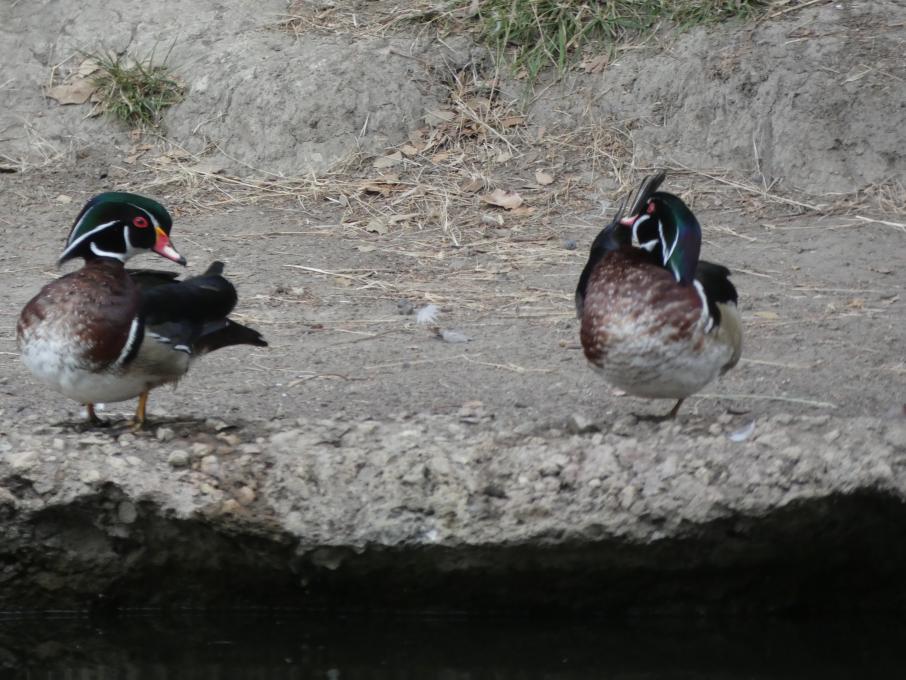
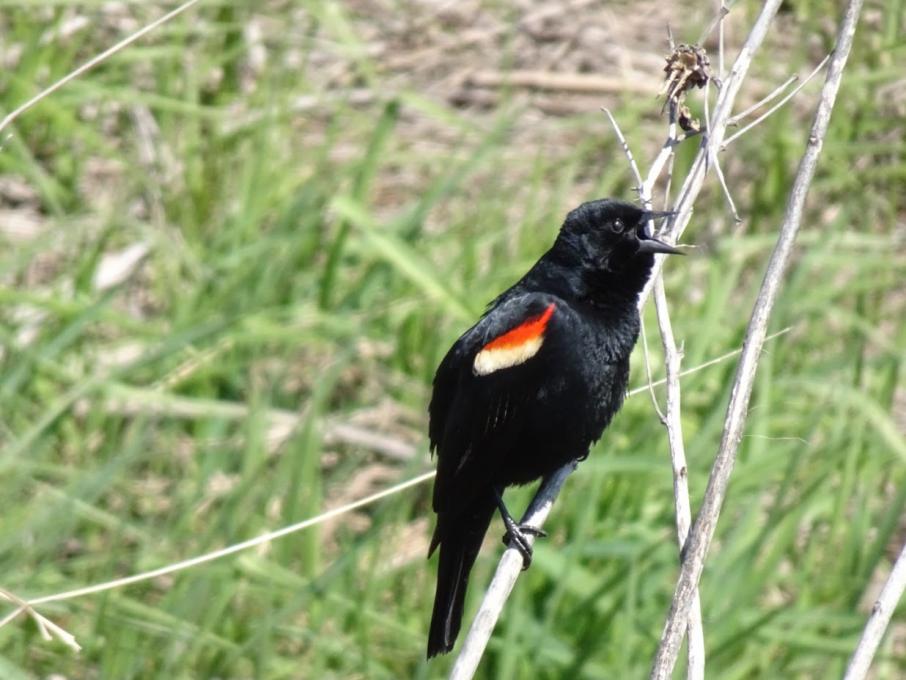 .
. 